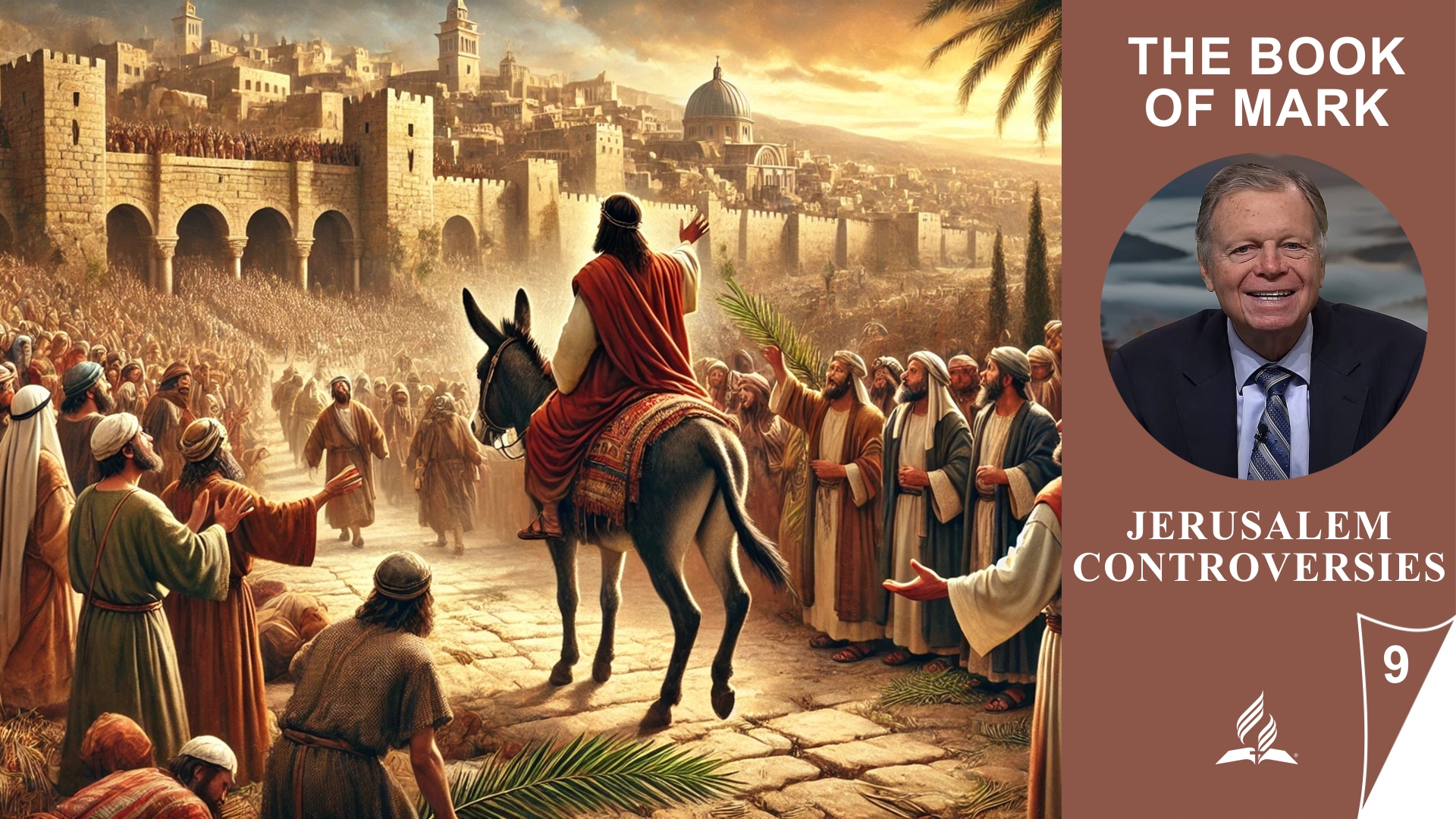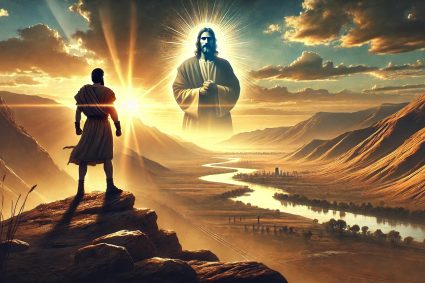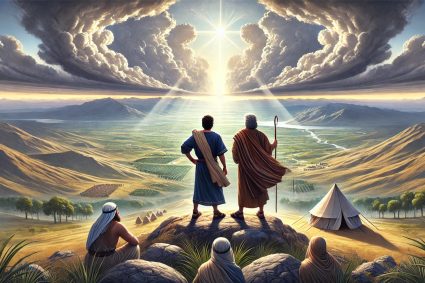
Series THE BOOK OF MARK with Pastor Mark Finley |
Lesson 9.Jerusalem Controversies |
The Final Journey: Jesus’ Revelation and Challenges in Jerusalem |
Lesson 9 focuses on the pivotal events marking the beginning of the final week in Jesus’ life. The triumphal entry into Jerusalem, followed by symbolic acts such as the cursing of the fig tree and the cleansing of the temple, reveals Jesus’ messianic identity and his authority over religious and worldly systems. This lesson also addresses Jesus’ responses to challenging questions from religious leaders, highlighting his wisdom and the central commandment of love for God and neighbor. These events pave the way for the coming suffering, death, and resurrection of Jesus, which are the core of the Christian faith.
Memory Text: Mark 11:25 – “ ‘And whenever you stand praying, if you have anything against anyone, forgive him, that your Father in heaven may also forgive you your trespasses.’ ”
Content:
9.1 The Triumphal Entry
Jesus’ Revelation as Messiah
In Mark 11:1–11, we see Jesus deliberately fulfilling the Old Testament prophecy from Zechariah 9:9–10 by entering Jerusalem on a donkey. This act is more than a symbolic gesture; it is a public declaration of his messianic identity. The emphasis on procuring the donkey underscores both the precise fulfillment of the prophecy and Jesus’ prophetic foresight. His entry into Jerusalem marks a significant departure from the secrecy surrounding his mission, as he now openly presents himself as the promised King. The crowd’s reactions show that they recognize the significance of this act, though the ultimate consequence will only become apparent in the coming days.
9.2 A Cursed Tree and a Cleansed Temple
Symbols of Divine Judgment
In Mark 11:12–26, we see a symbolic act by Jesus criticizing the state of the temple and the religious leadership of Israel. The cursed fig tree represents Israel, which, despite outward piety, bears no genuine fruits of righteousness. This fruitlessness is also reflected in the state of the temple, which has become a place of commercial activity rather than worship. Jesus’ cleansing of the temple serves as a clear warning that true worship and righteousness are required. The withered fig and the cleansed temple are directly related: both symbolize the impending judgment on a fruitless religious system.
9.3 Who Said You Could Do That?
The Challenge to Authority: Jesus’ Wise Response to the Religious Leaders
In Mark 11:27–33, the religious leaders challenge Jesus’ authority by asking him who gave him the power to cleanse the temple. They hope to trap him, but Jesus sees through their intent and responds with a counter-question about John’s baptism. This puts the leaders in a dilemma, as they cannot answer without compromising themselves. Jesus uses their inability to respond to avoid revealing his authority directly. This event shows how Jesus wisely responds to the scheming of his opponents while subtly indicating his divine authority.
9.4 Earthly Duties and Heavenly Outcomes
Taxes and Resurrection: Jesus’ Wisdom in the Face of Worldly and Spiritual Challenges
In Mark 12:13–27, the religious leaders attempt to trap Jesus with questions about tax obligations and resurrection. First, they ask about paying taxes to Rome, hoping to portray him as either a rebel or a traitor. However, Jesus wisely responds that one should give to Caesar what is Caesar’s and to God what is God’s. This answer teaches believers to fulfill their earthly responsibilities without neglecting their higher obligation to God. Later, the Sadducees pose a hypothetical question about the resurrection to discredit this teaching. Jesus corrects them by explaining that there is no earthly marriage in the resurrection and that God is a God of the living, affirming the hope of eternal life.
9.5 The Greatest Commandment
The Greatest Commandment: Love for God and Neighbor as the Core of Faith
In Mark 12:28–34, a well-meaning scribe asks Jesus about the greatest commandment. Jesus answers by quoting the Shema: the command to love God with all one’s heart, soul, mind, and strength. This highlights the comprehensive devotion to God. Jesus then adds that the second greatest commandment is to love one’s neighbor as oneself. This dual answer emphasizes the inseparable connection between love for God and love for others. The scribe acknowledges the wisdom in Jesus’ response, prompting Jesus to tell him that he is not far from the Kingdom of God.
9.6 Summary
The Triumphal Entry: Jesus’ Public Revelation as Messiah
Lesson 9 covers Jesus’ triumphal entry into Jerusalem, as described in Mark 11:1–11. Jesus consciously fulfills the prophecy from Zechariah 9:9 by entering the city on a donkey, emphasizing his messianic identity. The crowd recognizes the significance of this event and welcomes Jesus with “Hosanna” shouts, acknowledging him as the promised King. Through this act, Jesus publicly declares his mission and marks the beginning of the events leading to his suffering and death. The entry is a symbolic act that clarifies the expectations for the Messiah and the forthcoming fulfillment of divine promises.
Visited 43 times, 1 visit(s) today






